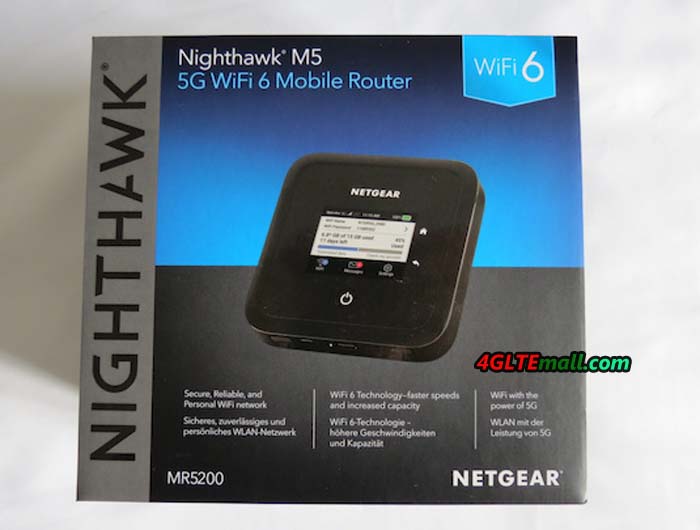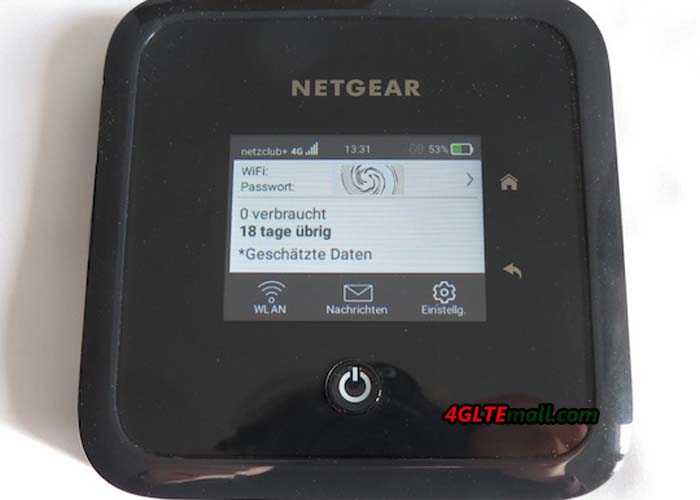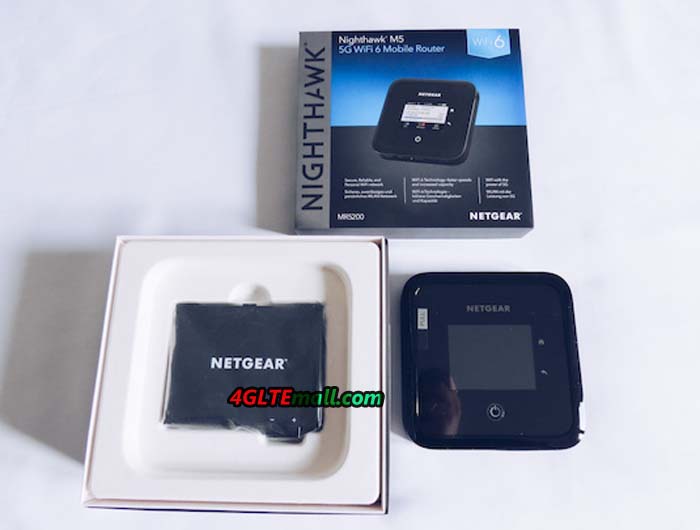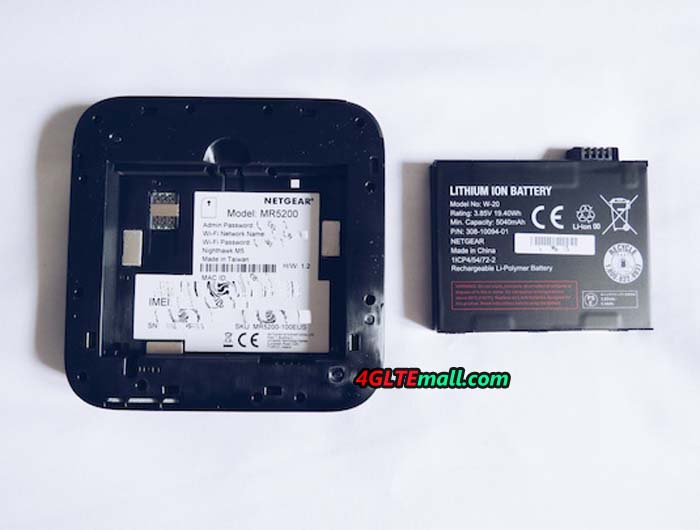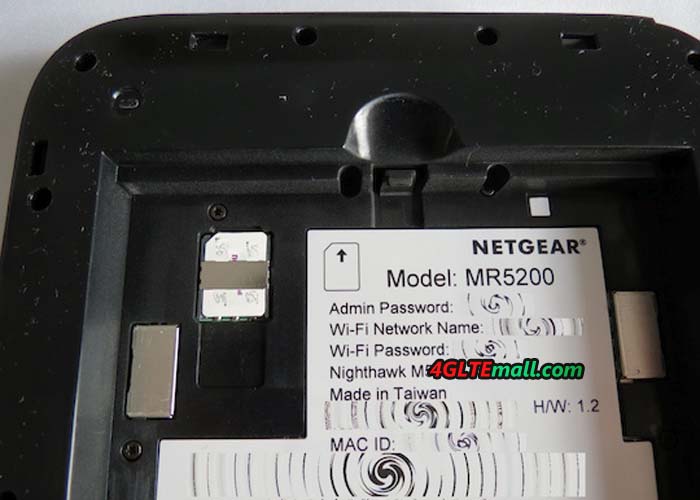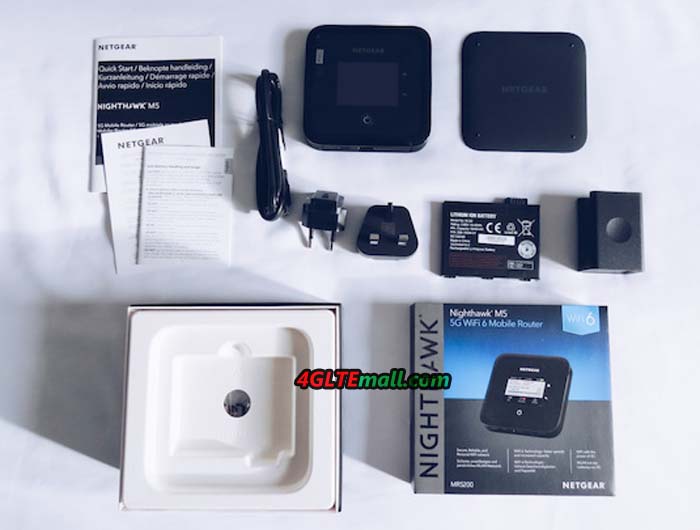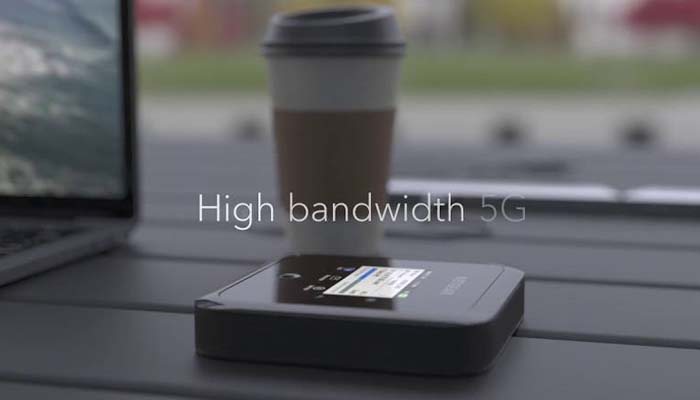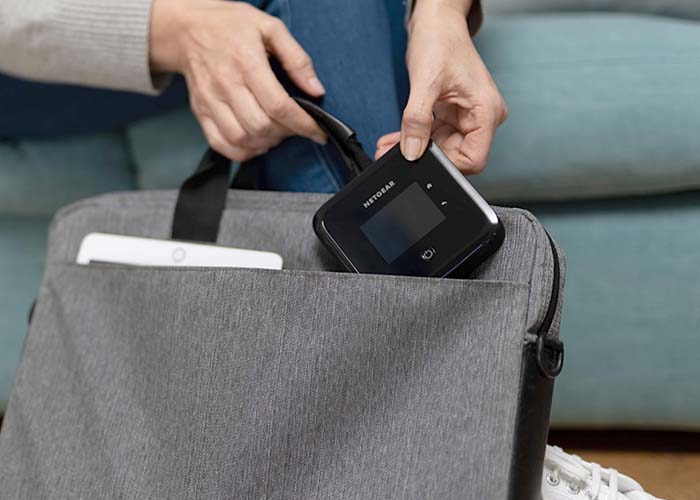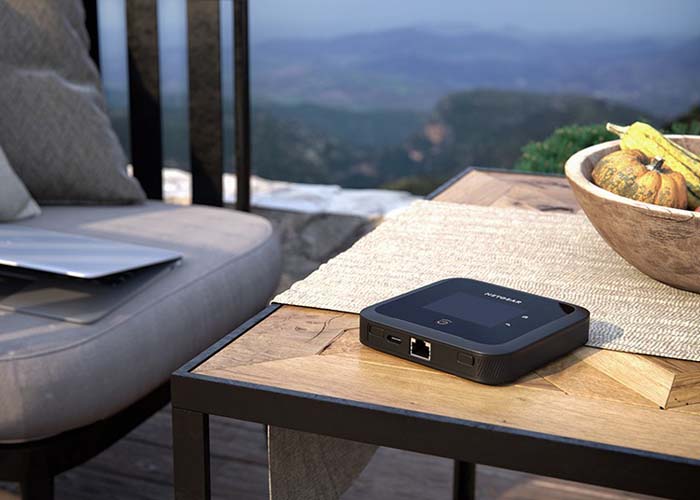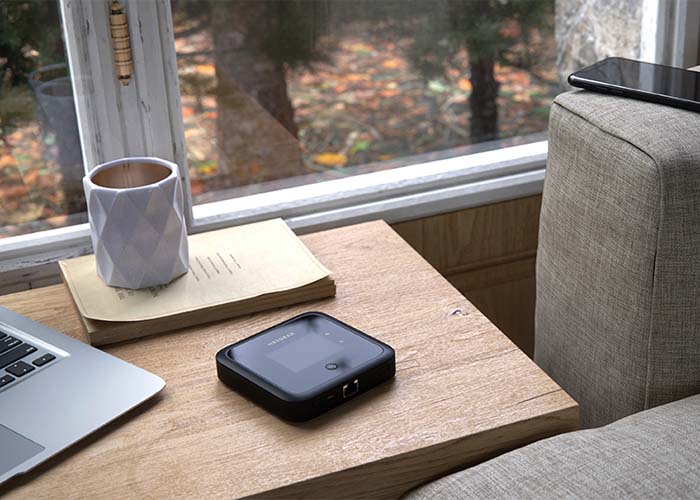Netgear Nighthawk M5 is a new 5G mobile WiFi hotspot which is already available in many countries. Regarding the performance for internet connection, we will take a test and you will read the detail in the following.
We have already shown what the Netgear 5G router looks like and which accessories are included in our picture unboxing linked above. In the first weeks of testing, the hardware of the Netgear Nighthawk M5 proved to be quite robust. Unfortunately, the touchscreen magically attracts fingerprints, so we had to clean it several times with a cleaning cloth.
However, you shouldn’t expect the Netgear Nighthawk M5 MR5200 to respond as quickly as a smartphone touchscreen. Sometimes the software took a small millisecond in our test before it responded to our input. We encountered a phenomenon with the Nighthawk M5 that owners of previous Netgear 4G routers reported. If the nano-SIM card is blocked with a PIN, a PIN query appears after the 5G WiFi router starts up. However, this screen is visually incorrectly designed. You can enter the PIN easily using the numeric keys, but the confirmation button is partly outside the visible area and must be aimed very precisely with your finger.
Otherwise, we did not notice any serious software errors when using the router.
Firmware: Latest version is required
At this point we still have to go into more detail about the software: If you buy the Netgear Nighthawk M5, you should make sure that you have the latest firmware in the “Settings – Software” menu immediately after booting up and connecting to the Internet the number 10.29.10.00 from November 17th and install it. With the old firmware, the router may only contact LTE networks, which is not the point of a 5G router.
We also observed with the Netgear Nighthawk M5 that WiFi modules from Android smartphones, which otherwise find any 5 GHz WiFi without any problems, have problems finding the 5 GHz WiFi set up by the Nighthawk M5 and connecting to it. Even manually entering the SSID and password failed in our test on at least three Android devices.
One device that the 5 GHz WiFi of the Nighthawk M5 could always find and connect to was an iPhone 11 Pro used in the test. The Android smartphones could connect to the 2.4 GHz network of the Nighthawk M5. Due to the regional overload of the 2.4 GHz band and the lower data rates, it is of course quite pointless to use a 5G router in this case if it cannot pass on the high 5G data rates via WLAN.
Features of the software
In terms of operation and functions, the software of the Netgear Nighthawk M5 is of course quite sophisticated, as always. On the start page, network information, time and battery charge status are displayed in the status area. This is followed by the SSID and password of the 2.4 and 5 GHz WiFi hotspots. With a mobile tariff with a data throttle, you can also see how much data volume is left on the home page. At the bottom you can see how many devices are connected via WLAN and whether new SMS messages have arrived.
In the settings menu the user can configure things like the APN. The brightness of the screen can be regulated or an unlock password can be assigned. The Netgear Nighthawk M5 also supports USB tethering; the function can either be activated at the same time as the WLAN or as an alternative to the WLAN hotspot. The Netgear Nighthawk M5 can also be integrated into an existing WLAN or Ethernet network via the data-saving mode and then only serves as a network bridge for the connected devices.
Data rates in the test
For our test of the Nighthawk M5, we received 5G-capable SIM cards from CSL and PCCW. After the firmware update, the hotspot immediately logged into the available 5G networks.
The measured data rates come close to the values that we measured with the 5G router from HTC: HTC 5G Hub. In CSL’s 5G network, we determined maximum data rates of up to 781 Mbit/s in the downstream and 134 Mbit/s in the upstream. In the PCCW network, the data rates we measured in the downstream were a maximum of 187 Mbit/s in the downstream and 82 Mbit/s in the upstream. The CSL data rates at the locations we measured actually corresponded to a typical LTE value rather than a 5G value.
Of course, we also took measurements with a laptop that was connected to the Nighthawk M5 via the Ethernet interface rather than WLAN. Here we could observe that the measured values were always around 12 to 15 percent above the values measured via WLAN.
Netgear has not received any further error messages about the problem with the 5 GHz WLAN under Android.
Battery life in the test
The Netgear Nighthawk M5’s 5040 mAh battery is strong, but it doesn’t work miracles either. Even if the router’s display switches off in the meantime, the maximum battery life is around 6 hours. That is a decent value, but not a top performance either. If you really have to work with the Nighthawk M5 all day long, you should have access to a socket again in between – or take a mobile power bank with you.
Conclusion
With the current firmware, the Netgear Nighthawk M5 did its job properly and without any real errors. In the 5G network, the router achieved peak values of just below 800 Mbit/s at the locations we tested. We are in contact with Netgear about the 5 GHz WiFi problem. The battery lasted around 6 hours in the test. There was little to criticize about the intuitive operation of the router.
